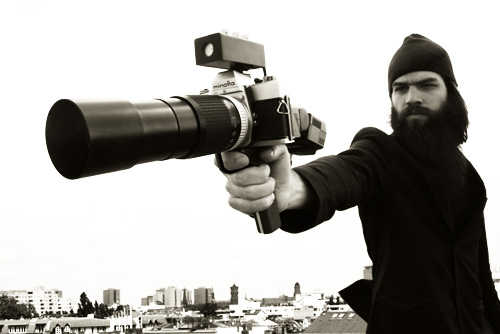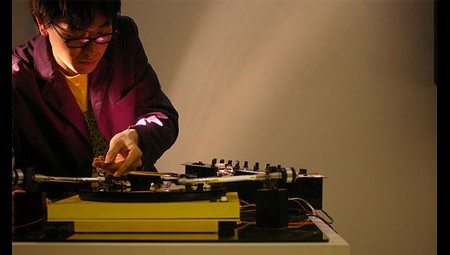
The Royal College of Art in London recently hosted its annual graduate summer show, where postgrad students exhibit some of their artistic and musical projects. Among those featured this year were several vinyl record and turntable mods by [Yuri Suzuki].
Day: June 29, 2008
Nintendo DS Homebrew Music Apps Roundup
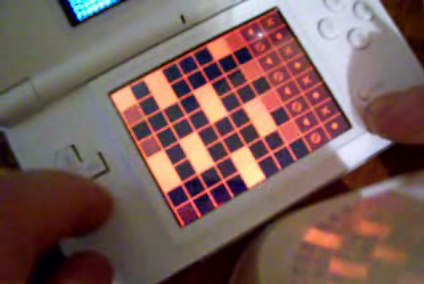
The fine folks at remaincalm.org, who brought you the wireless mcu controller dsmcu, have put together a list of 24 homebrew music apps for the Nintendo DS. We’ve mentioned programs like Protein[DS] before, but the list has others like this monome emulator. If you notice anything they’re missing, let them know and they’ll be sure to add it in.
[via Waxy]
Seattle Power Tool Race & Derby
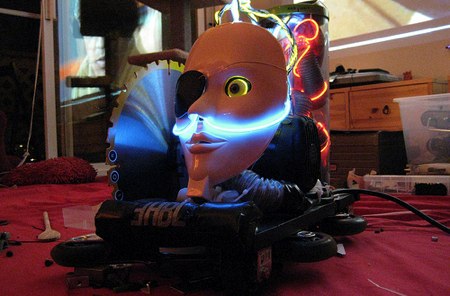
Yesterday, the Hazard Factory, an industrial arts studio, hosted the 3rd annual Seattle Power Tool Race & Derby. Participants construct a dragster powered by at most two “power tools” to race head to head down a 60 foot plywood channel. The rules are fairly loose and creativity is encouraged just as much as performance. For an example build, [spacematters] posted his machine using a circular saw and inline skate wheels. A Flickr photo pool of the day’s shenanigans is coming together and you can see some of the registered entries on the Hazard Factory’s site.
[photo: Æther]
Twilight For Zune

[Mortiz Waldermeyer], the man who brought us the interactive LED pong table, has recently completed a project commissioned by Microsoft: an interactive chandelier that can receive and react to music from a Zune mp3 player. The technology behind this project which [Waldemeyer] calls Twilight is not all that complex: at the core of the chandelier is a Zune, which acts as the receiver for other Zunes in the area. The central chandelier Zune then feeds graphic equalizer display data to another device, which in turn feeds a microcontroller running the LEDs embedded in the chandelier. The chandelier itself is constructed of 15 sheets of organza fabric. The result is a rich, dancing display of lights that people in the room with a Zune can take turns controlling. The installation has just opened in LA.
Hack Cameras With The Image Fulgurator
[Wallace] sent in this awesome project built by [Julius Von Bismarck]. The “Image Fulgurator” is the result of mating an optical slave flash with a camera body turned projector. The result is the ability to project ghost images onto a picture being taken by anyone using a camera with their flash. Check out the demo video after the break or hit the project site for more.
On-board Focus Confirmation For The Canon Digital Rebel
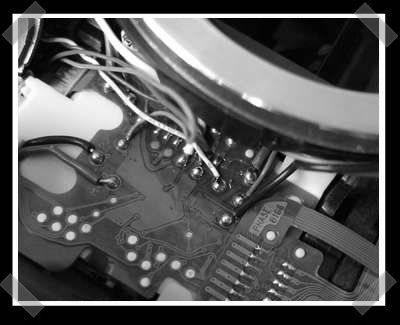
We’ve seen plenty of lens hacks, but [Koray] took things in a new direction. Rather than buy lens chips for modding all of his manual lenses, he added a lens chip inside his Digital Rebel 300D (aka XT). Most of us might cringe at gutting their Rebel, but he performed this bit of soldering surgery on a unit he picked up for £40 and repaired. Excellent work!
Update: yeah yeah, the 300D is the original Digital Rebel.
GIR Robot

We love hardware modding, robots, and generally all things in the DIY category, but cartoons are pretty awesome too. The hilarious yet sadly short lived Nickelodeon cartoon Invader Zim was a favorite ours, due in no small part to a character called GIR, a little borderline insane robot. Not content with just a cartoon, a group of Montana State Univesity, Bozeman graduates have decided to build a real, functional GIR robot.
For those unfamiliar with the cartoon, GIR is a quirky, malfunctioning robot designed to help an alien named Zim take over Earth. Loaded with cameras, lights, and all manner of Inspector Gadget style devices in the cartoon, the team have their work cut out for them: if their version is even half as advanced as the cartoon version, it would be several generations more advanced than anything we’ve ever seen. So far, the team has only begun working on the head and neck, installing servos to control its motion, cameras, decorative LEDs in the eyes, and the software to control it all. According to [Arthur Krebsbach], one of the project contributors, this is a long term, open-ended project that will employ new technology as it becomes available. The project is a bit silly, but legitimately ambitious; [Krebsbach] notes, “I don’t think we will ever be satisfied with the Gir until he can fly but runs out of fuel quickly because he replaced it all with Tuna.”
[via JhnenVEE]

